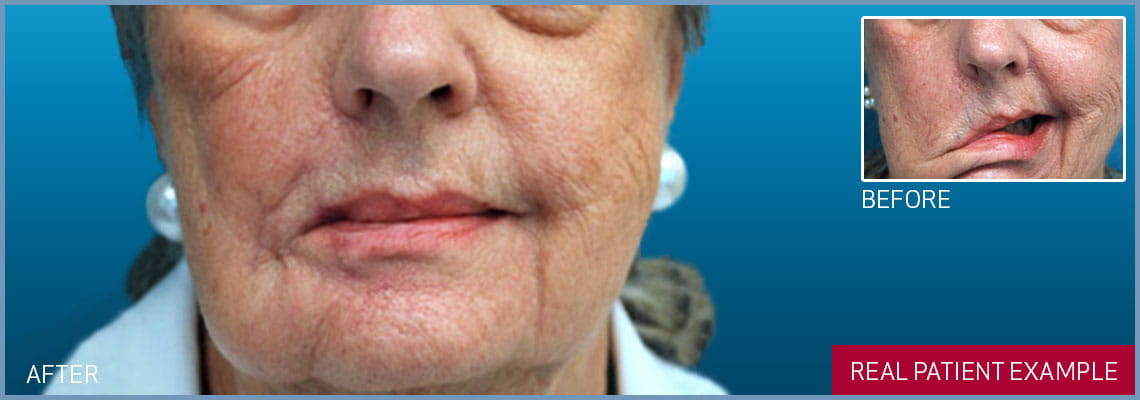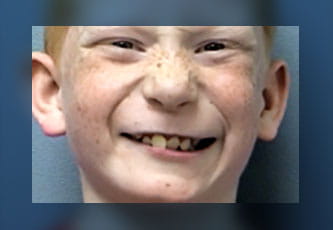Lower Lip Symmetry

Have you ever seen a smile that is “just not right” but you can’t put your finger on the exact reason why? Subtle asymmetry of a smile is frequently a result of weakness in the lower lip. During a full smile the muscles of the upper lip elevate the lip partially exposing the upper teeth. At the same time the muscles of the lower lip work in the opposite direction to produce a slight depression of the lower lip partially revealing bottom teeth. It is the loss of lip depression that is frequently responsible for subtle smile imbalances. The marginal mandibular branch of the facial nerve controls the muscles of the lower lip. Damage to this facial nerve branch is a frequent cause for lower lip weakness. Injuries to the marginal mandibular nerve branch can be sustained during facelift surgery. Thankfully the great majority of individuals enjoy a recovery of this function during the subsequent year. Birth injuries and congenital differences are also common causes of lower lip weakness.
When lower lip weakness does not resolve then a symmetric smile can be reestablished by weakening the normal side. Injection of local anesthesia into the muscles of the lower lip produces temporary weakness lasting one to two hours. This simple test performed in the office offers the opportunity for patients to gauge the effects produced by lower lip surgery. Similarly a more prolonged trial can be obtained by injecting Botox into the lip depressor muscles. The local muscle weakness produced by Botox lasts up to six months and can be repeated providing an alternative to surgery.
If the individual is satisfied with the improvement in symmetry produced by injection of local anesthesia or Botox then the effect can be made permanent during a short outpatient procedure. The surgery is performed inside the mouth avoiding the creation of external scars. Segments of the lip depressor muscles are removed on the normal side (myectomy) to produce a more harmonious smile.
A surgical alternative to myectomy is to attempt to restore the motion of the lower lip. These surgeries are more complex and less frequently requested than muscle resection but can provide a good alternative in select individuals. When the duration of facial paralysis is short then nerve function can be reestablished in the lower lip muscles using long nerve grafts from the normal side (cross-face-nerve-graft) or by redirecting nerve fibers from the motor nerve to the tongue (partial hypoglossal nerve transfer).
In cases of long standing paralysis a strap-like muscle beneath the chin (anterior digastric) can be redirected to the lower lip in an effort to restore lip depression. Alternately a small microneurovascular muscle flap used with a cross-face nerve-graft can provide an elegant but complex solution.
At Houston Methodist's Center for Facial Paralysis Surgery and Functional Restoration, we perform the following procedures to correct lower lip asymmetry:
LOWER LIP PARALYSIS TREATMENT

Left lower lip myectomy
real patient case studies
Learn how facial paralysis surgery and functional restoration can help you.
